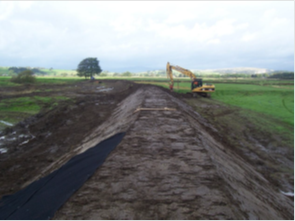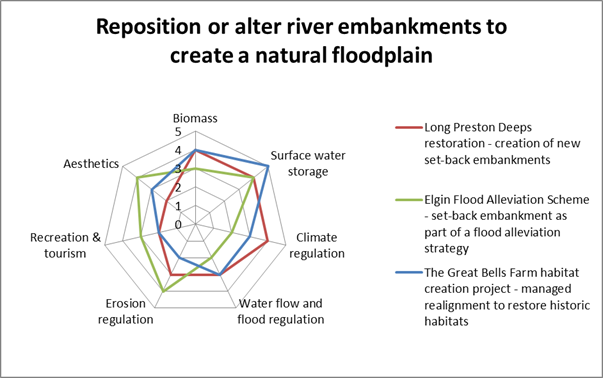This type of activity is becoming more frequently used to increase the connection between a river and its floodplain, whilst also maintaining a sufficient level of protection from flood risk for the area.
 This activity can only be delivered where land is available to be set aside for the purpose of increasing the amount of available floodplain.
This activity can only be delivered where land is available to be set aside for the purpose of increasing the amount of available floodplain.
‘Allow the river to flood its floodplain’ and ‘Preserve and improve edge and bankside habitats’ are also closely related to this activity.
Long Preston Deeps image © Environment Agency copyright and database rights 2013
Techniques
There are a limited number of techniques that can be used to implement this environmental improvement, depending upon the location and constraints in and around the embankments. These include:
- Moving the embankment landward away from the watercourse to create more floodplain and enable a more ‘natural’ and varied river
- Restoring the banks and bed of the channel to a more natural form using soft-engineering techniques
- Restoration of ox-bow lakes and associated habitats on a wider floodplain
Benefits
Setting back embankments can deliver a wide range of direct and indirect benefits, including:
- Direct benefits to plants, invertebrates, birds and animals which live on the banks, riparian and floodplain zone
- Direct ecosystem benefits associated with the creation of new habitats (grassland instead of concrete), including maintenance of and improvements to biodiversity
- Climate change adaptation, allowing habitats and species to adapt to changing conditions
- Improvements to the aesthetic value of the watercourse and improvements to its recreational value
- Increases the potential for removal of fine silt from river systems – this will increase water clarity which in turn benefits ecology
Case Study Benefits
This diagram displays a comparison of benefits scores (using a high-level ecosystem service assessment methodology) associated with the techniques used in each case study. More details on the methodology can be found here.